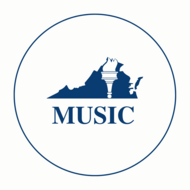(View Complete Item Description)
This nine-week unit builds music literacy skills and supports connections to outside content. It is intended to co-exist with the secondary choral classroom and strengthen music literacy skills. Students will engage in small groups to collaboratively write a song together. Students will use melodic, harmonic, and aural skills to identify chord progressions, hear and sing melody lines over chord progressions, write lyrics, and sing together in unison and harmony. Students may also use accompanying instruments during this project.
Material Type:
Lesson Plan
Author:
VDOE Fine Arts




















